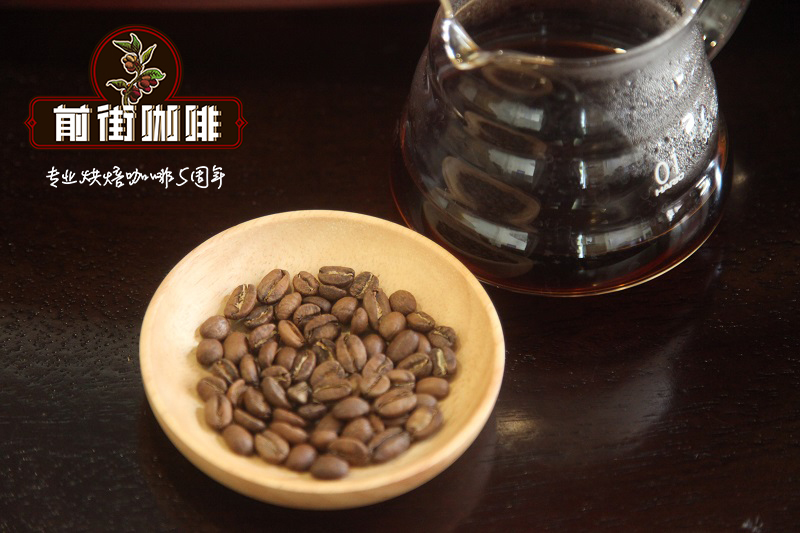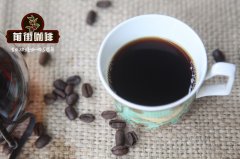What is the flavor of Malawian coffee introduced by the United Cooperative of Mzuzu small Farmers in Malawi?

Professional coffee knowledge exchange more coffee bean information please follow the coffee workshop (Wechat official account cafe_style)
Mzuzu is a joint cooperative made up of five primary coffee farmers' cooperatives, with about 4000 farmers. Its full name is Mzuzu Coffee Planters Cooperative Union or MZCPCU. Similar organizations can be found in all East African countries.
The five junior cooperatives are all located in important coffee producing areas in northern Malawi. They are located in:
1Misuku Mountain area (Chitipa District)
2, Phoka Mountain area (Rumphi District)
3Jing Viphya Mountain area (Rumphi District)
4, Mzimba Eastern Mountain area (Mzimba District)
5, Nkhata-Bay Plateau (Nkhata-Bay Administrative region)
The Geisha species of the Mzuzu Associated Society is mainly planted in the high-altitude producing areas of Misuku, and partly from the mountains of Phoka. The Geisha species originated in Ethiopia and spread to Panama through East Africa. However, the flavor of Geisha species from different producing areas naturally has its own characteristics, so you might as well compare and take a look at it.
Malawi is located in East and South Africa, is a landlocked country not dependent on the sea, the northern part of the country to the east of Tanzania, is a vast natural territory of Lake Malawi, the lake even extends to the junction with Mozambique; the western neighbor is Zambia The central and southern parts of Malawi, that is, from east to south to west, are bordered by Mozambique. Malawi is a small producer of coffee. Although it produced only 25000 bags (60 kg each) in 2005, thanks to the efforts of cooperatives such as MZCPCU, the area and harvest of coffee are growing year by year.
Malawi is also a member of the East African Fine Coffee Association (Eastern Africa Fine Coffees Association, referred to as EAFCA), which is promoted by the East African Fine Coffee Association at the annual SCAA annual exhibition and the SCAE exhibition in Europe.
In May this year, in Long Beach, California, the East African Coffee Association carefully designed a yacht party to invite coffee buyers to try their coffee feast.
In the annual African Taste of Harvest national coffee competition, Malawian coffee also attracts more attention, because the acidity is not as bright as Kenya, but the sweetness and aroma are quite high, especially 2007 of the new products are more distinctive in greasy and tail spices!
The Mzuzu small Farmers' Union, as mentioned above, mainly has five coffee-producing areas. Each region has coffee producers' associations, whose main tasks are breeding, planting guidance, education and training, organizing farmers, and maintaining industrial roads. Coffee fruits harvested by farmers can be bought and sold freely, unlike the centralized auction system in Kenya, so the relationship between farmers and the government is more harmonious. As for the varieties planted in Malawi, they are all planted by Elaraby, especially Agaro and Geisha. Due to the weak resistance of Agaro to CBD (coffee cherry disease) and leaf rust, many farmers changed to Catimor. Of course, some farmers planted Mundo Novo, Blue Mountian and Catura introduced by missionaries in the early years.
70-80% of the estates in Misuku district are trapezoidal, and most farmers still abide by organic fertilization. the harvest season is from the end of April to October, and farmers begin to harvest berries at 6 o'clock in the morning, so that the coffee cherries harvested on the same day can be sent to the nearby primary water washing station less than 5 kilometers in the afternoon for peeling and meat removal. After entering the washing channel, the fermentation tank is introduced into the fermentation tank to do the fermentation operation of 48Mel for 72 hours (the time depends on the climate and fermentation condition of the local water washing station). These washing stations are all located within a radius of 5 kilometers, that is, to avoid the peculiar smell of fermentation caused by sunshine and too long time. The last time to accept the cherries is two o'clock in the afternoon, so that the coffee cherries of the same day can complete the peeling work to ensure the quality.
It is in this rigorous operation that these junior cooperatives are able to maintain their usual level, and most of the coffee they produce is still bought by European traders.
[basic Information]
Country: Malawi level: AA producing area: Misuku and other areas screening
Co-operative: Mzuzu
Variety: Geisha
Harvest time: the latest arrival in 06-07
Treatment: natural scaffolding in the rear part of the water washing method
[cup test report]
Baking method: soy beans, cinnamon roast, baking time 12 minutes, close to Agtron/SCAA baking color card N0.60 (Roast color classification system)
Dry fragrance: flower fragrance, herbal cool fragrance, sweet spices, citrus,
Wet fragrance: creamy, plum, herbaceous sweet, tea, tangerine
Sipping: apricot, white pomelo sweet, greasy, sweet spices, lime, nose with flowers and fruit, light mint, body oil with laurel leaf aroma, sweet chocolate and raisins, the aftertaste lasts a long time, when the coffee temperature drops, the raspberry acid is lively again, it is a rich and changeable coffee.
Qianjie coffee is recommended to be brewed with 90 degrees water, with apricot, citrus, lime flavor.
Qianjie coffee: Guangzhou bakery, the store is small but a variety of beans, you can find a variety of unknown beans, but also provide online store services. Https://shop104210103.taobao.com
Important Notice :
前街咖啡 FrontStreet Coffee has moved to new addredd:
FrontStreet Coffee Address: 315,Donghua East Road,GuangZhou
Tel:020 38364473
- Prev

520000 "coffee franchises" open in one day! How did "pinduoduo" in the coffee industry come into being?
Professional coffee knowledge exchange more coffee bean information please follow the coffee workshop (Wechat official account cafe_style) 11 days to achieve 520000 coffee stores, shocked the industry, it is said that coffee lovers have their own coffee shop dream! But the dream is very full, the reality is very bony! If you want to open a coffee shop, you have to consider many factors: store cost, labor cost, fixed capital
- Next

What is Indian monsoon Malaba coffee? How should India's Malaba coffee be roasted?
Professional coffee knowledge exchange more coffee bean information Please pay attention to coffee workshop (Wechat official account cafe_style) Monsoon Malaba AA Indian Monsooned Malabar AA early due to slow shipping speed, coffee raw beans exported from India to Europe absorbed moisture in a humid environment during the long transport process, thus transforming and producing a characteristic raw bean that had never been seen before.
Related
- What documents do you need to go through to open a coffee shop? coffee shop coffee shop certificate processing process
- How to purchase Coffee beans in small Cafe how to choose a suitable supplier for domestic Coffee supply Company
- How to drink Starbucks Fragrance White Coffee? how to make Australian White Coffee? what Italian coffee beans are recommended?
- The Story of Flora Coffee: the name of Flora Coffee Bean and the implication of the Flowers on Florna Coffee
- How much does a cup of coffee cost? How much is the profit of a cup of coffee? What is the profit of the coffee shop in a year?
- Yunnan small Coffee, known as "fragrant Coffee", introduces the characteristics of Alpine Arabica Coffee producing areas in Yunnan, China
- 2023 latest Starbucks full menu price list how much is a cup of Starbucks coffee what is better to drink the most popular hot and cold drinks recommended
- Starbucks different kinds of Coffee Price list Starbucks menu 2023 Top Ten Best drinks in Starbucks
- Starbucks Spring praise Comprehensive matching Coffee Bean theme Story Packaging implication and taste description
- The cost of a cup of coffee latte American coffee cost price and selling price

